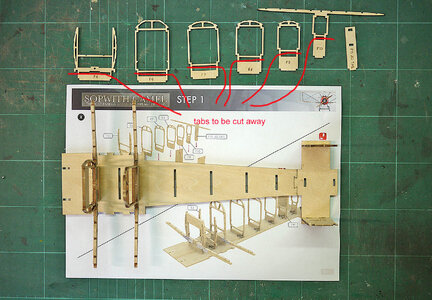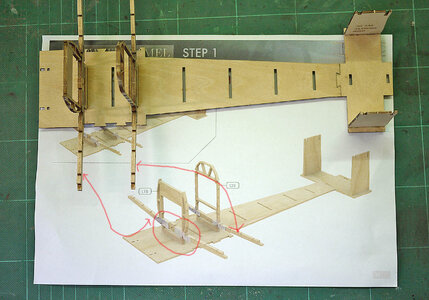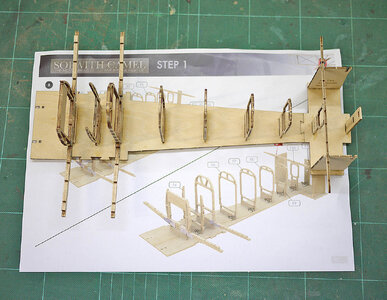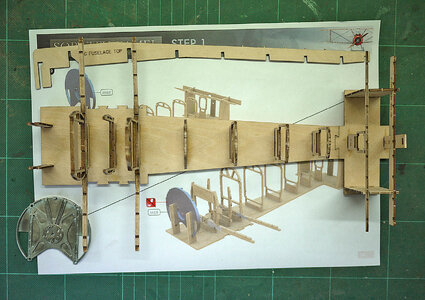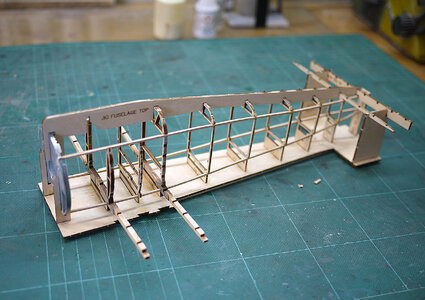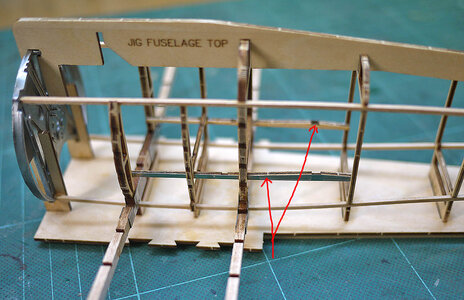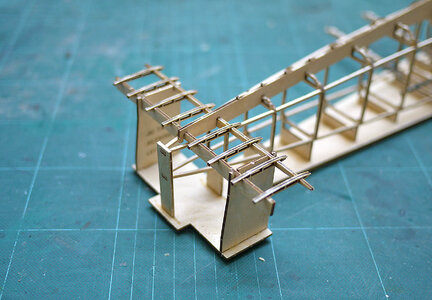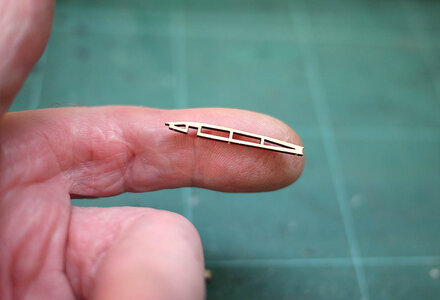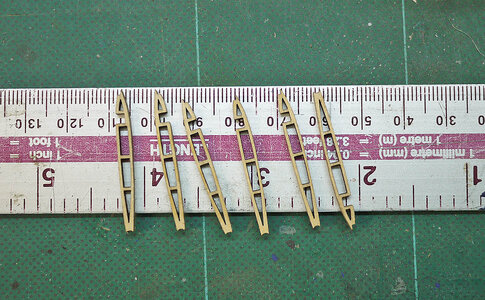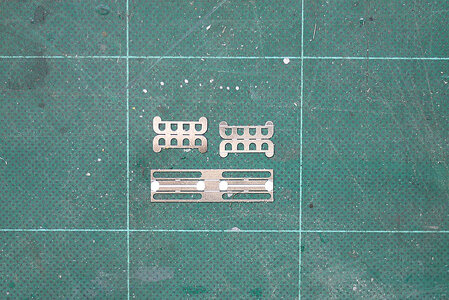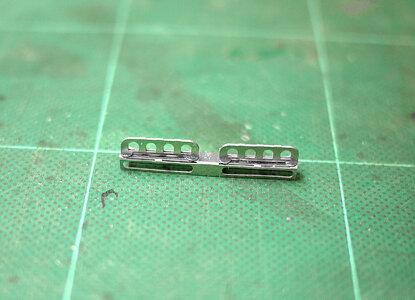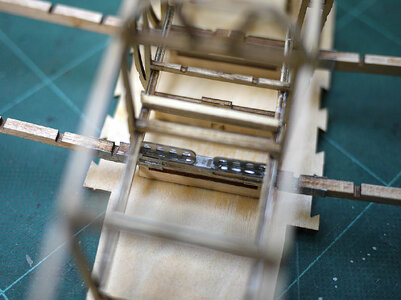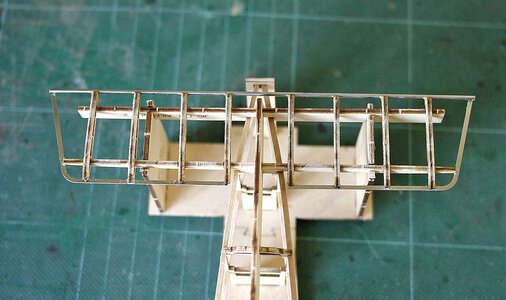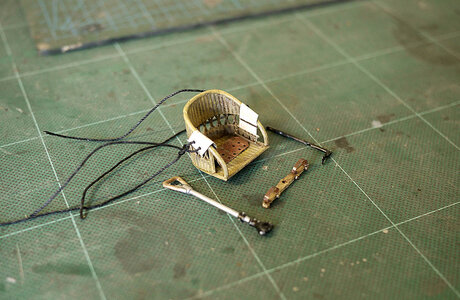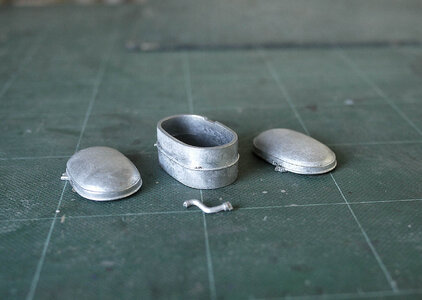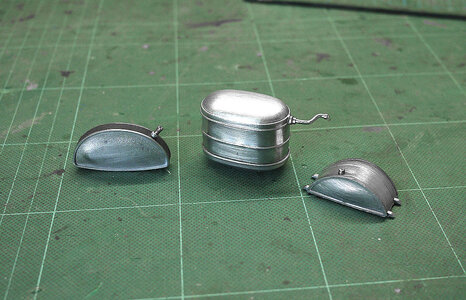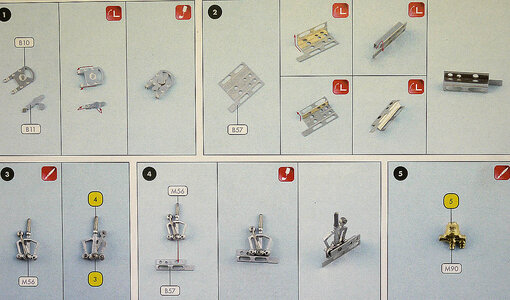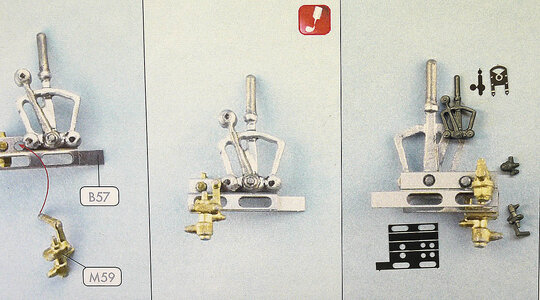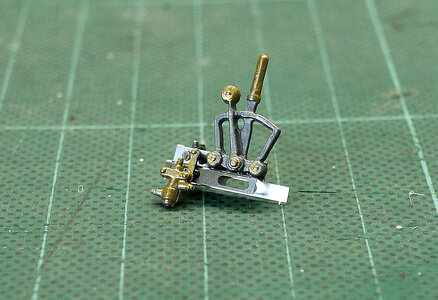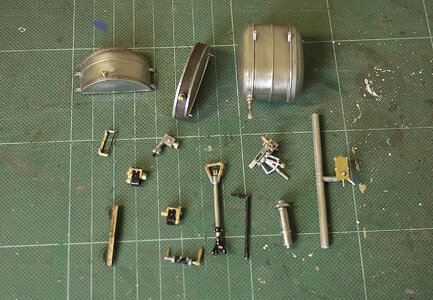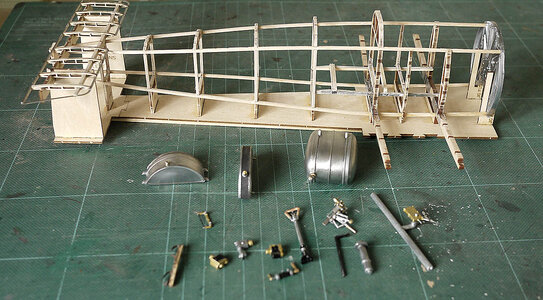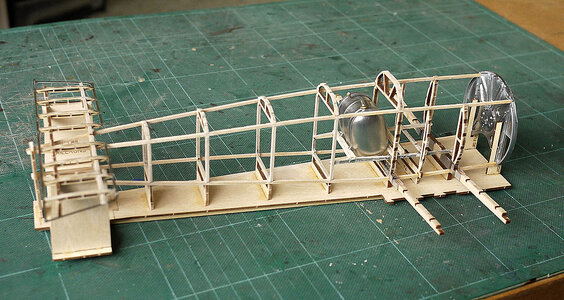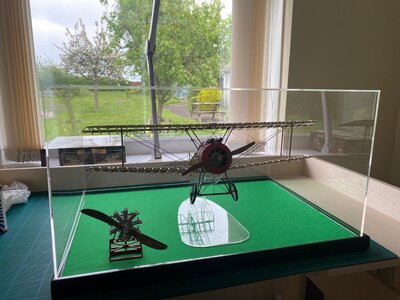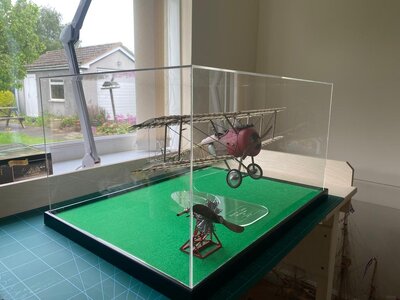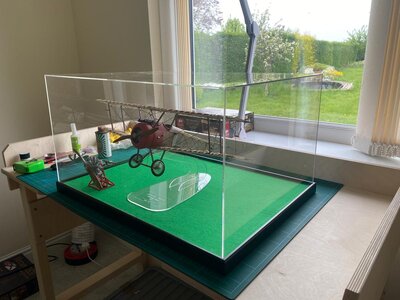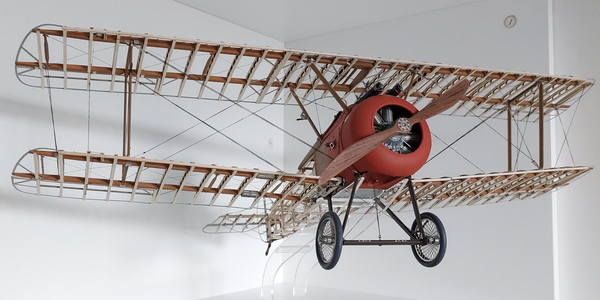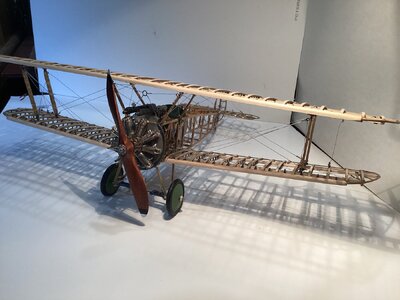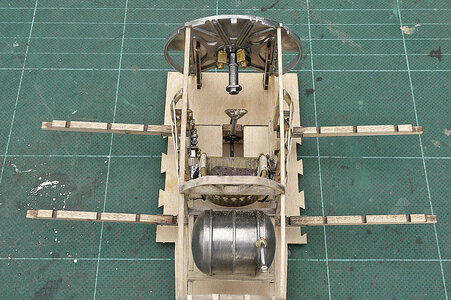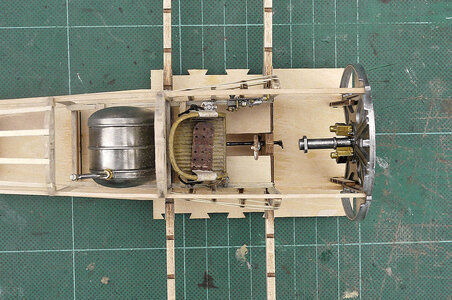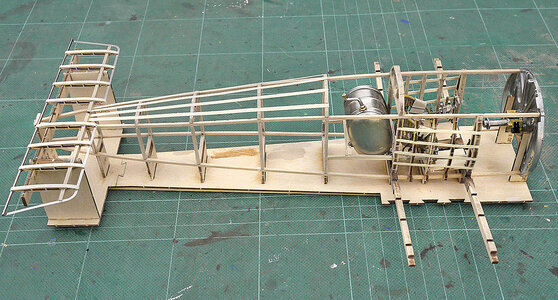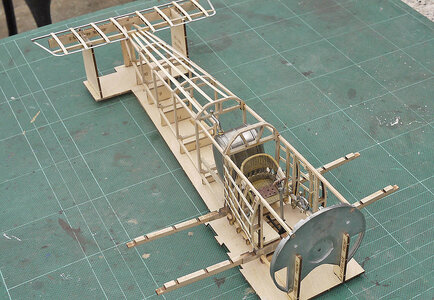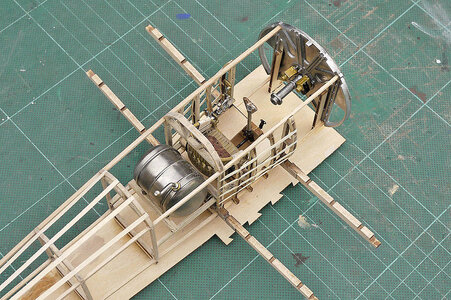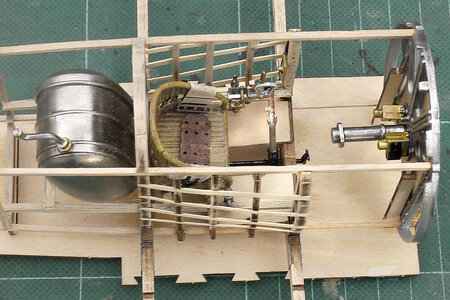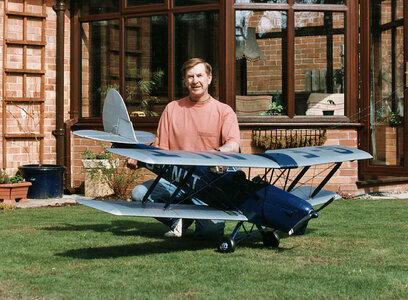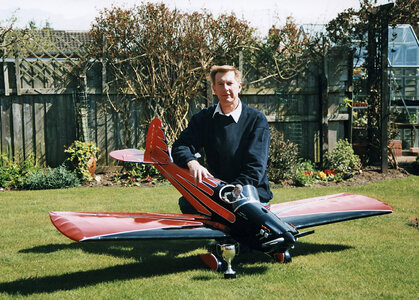- Joined
- Dec 16, 2016
- Messages
- 1,021
- Points
- 493

Good morning, SOS. And welcome to my new build log. Having just successfully completed HMS Blandford I am attempting something completely different, a 1:16 scale Sopwith Camel from a kit by Artesania Latina.
I was bought this by my wife as a Xmas present, I’d given her a shortlist of suitable kits, the proviso being that this time it had to be one that wouldn’t create any dust, so for the next couple of months I’ll be building and documenting the Sopwith.
The kit was well presented in its box, well packed, nothing loose to rattle around and break. There was some pretty nice artwork which I’ve pinned up above my bench to give me inspiration, the instructions were on a supplied CD, and they are the most comprehensive I have ever seen on any model. They take you through the build step by step in the most detailed way as if you were a complete modelling novice, I printed the instructions out for ease of use, I don’t know how many pages, too many to count but as you will see it is thicker than many of my wife’s romantic sagas that she reads. There are also several sheets of a parts list picturing and identifying every part. There are four trays of cast parts which seem cleanly cast and quite well detailed. There are two large and one small photo etch sheets which looks well detaled and includes a vast amount of turnbuckles for the rigging. There are some wooden sheets with the parts cleanly laser cut with no burn visible which is good as some parts like the ribs look to be very delicate and would easily break if you had to clean them up. I like the fact that there are good jigs within the build to assist with position and alignment. There is a bundle of strip wood, some of which looks very delicate, I don’t know how I’ll be able to handle without breaking some of these as I haven’t the most sensitive fingers. There are metal rods, some fine copper wire, decals, cord and fishing line. A very nice Perspex display stand is included which is a nice touch.
Some pictures then on with the build.
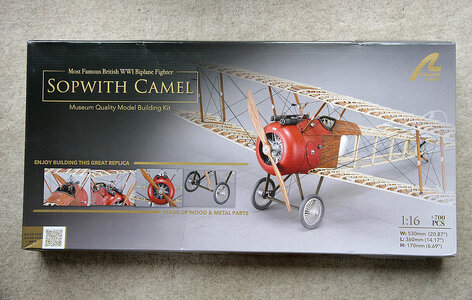
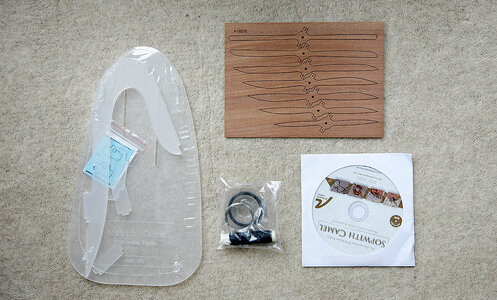
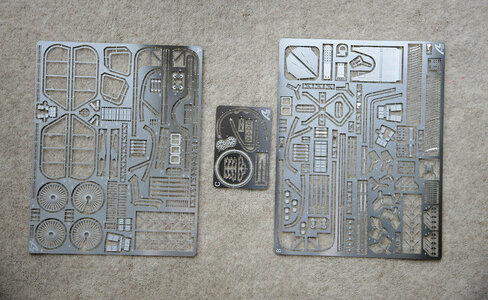
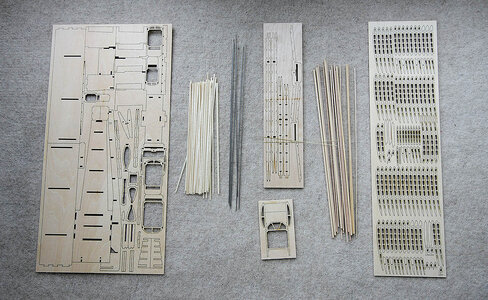
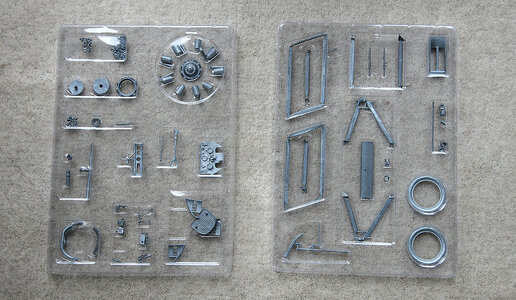
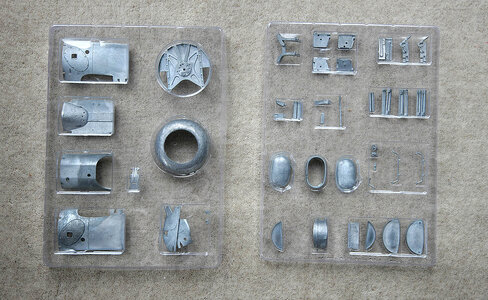
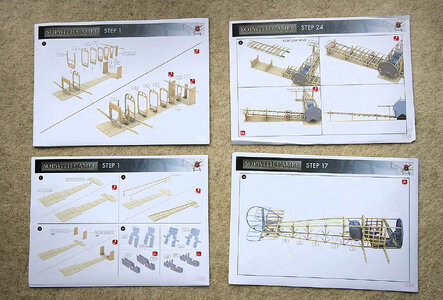
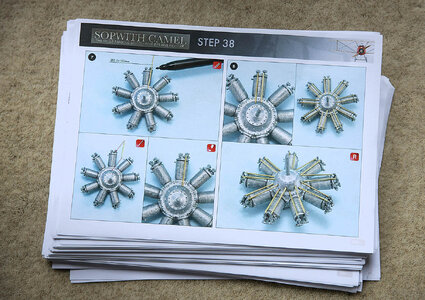
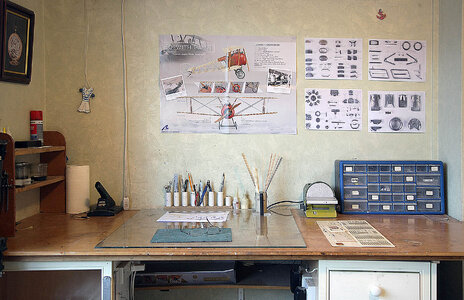
I was bought this by my wife as a Xmas present, I’d given her a shortlist of suitable kits, the proviso being that this time it had to be one that wouldn’t create any dust, so for the next couple of months I’ll be building and documenting the Sopwith.
The kit was well presented in its box, well packed, nothing loose to rattle around and break. There was some pretty nice artwork which I’ve pinned up above my bench to give me inspiration, the instructions were on a supplied CD, and they are the most comprehensive I have ever seen on any model. They take you through the build step by step in the most detailed way as if you were a complete modelling novice, I printed the instructions out for ease of use, I don’t know how many pages, too many to count but as you will see it is thicker than many of my wife’s romantic sagas that she reads. There are also several sheets of a parts list picturing and identifying every part. There are four trays of cast parts which seem cleanly cast and quite well detailed. There are two large and one small photo etch sheets which looks well detaled and includes a vast amount of turnbuckles for the rigging. There are some wooden sheets with the parts cleanly laser cut with no burn visible which is good as some parts like the ribs look to be very delicate and would easily break if you had to clean them up. I like the fact that there are good jigs within the build to assist with position and alignment. There is a bundle of strip wood, some of which looks very delicate, I don’t know how I’ll be able to handle without breaking some of these as I haven’t the most sensitive fingers. There are metal rods, some fine copper wire, decals, cord and fishing line. A very nice Perspex display stand is included which is a nice touch.
Some pictures then on with the build.












